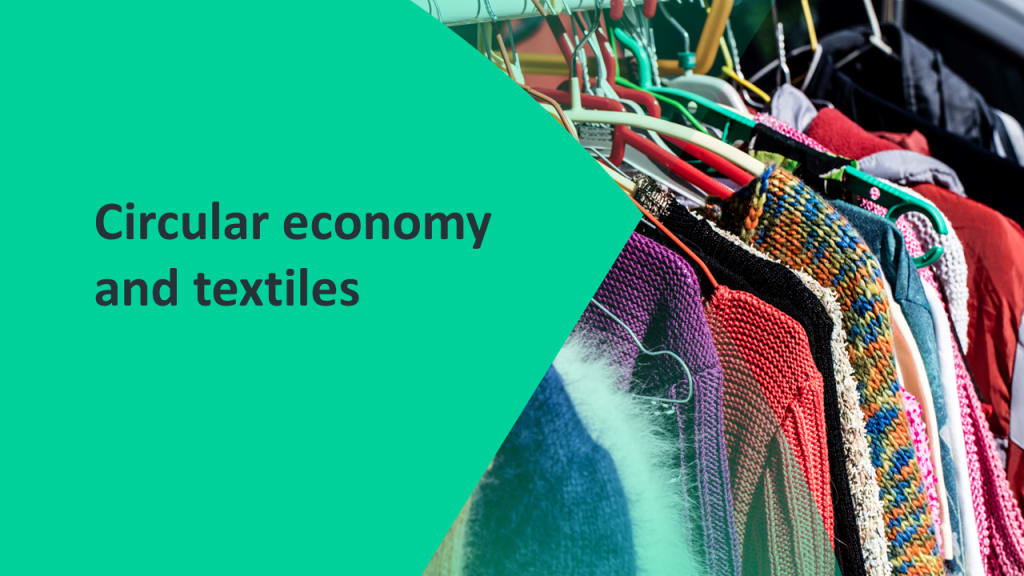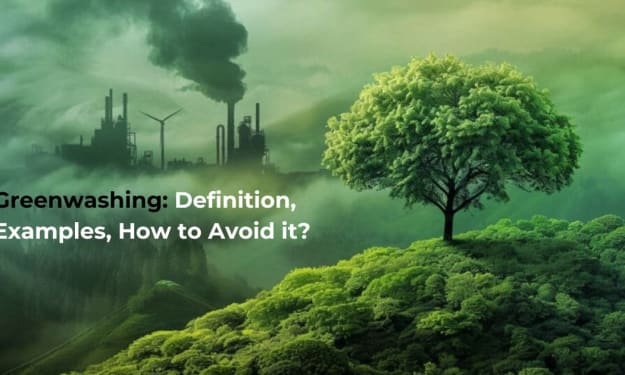Everything Need to Know About The Circular Economy in Textiles
Circular Economy in Textiles

Circular Economy in Textiles
The textile industry, because it is one of the most polluting in the world, is at the crossroads of many challenges. The environment pays a heavy price for textile overproduction. The transition to a circular economy in textiles is crucial for the future of our planet. In France and around the world, the circular economy offers a sustainable and relevant alternative. Eco-designed clothing, textile recycling, revolutionizes our way of experiencing fashion. Can the circular economy redefine the future of the textile industry? Can this industry transform itself without losing its creativity? Follow the guide and let's discover how the textile industry can adopt the circular economy.
What is the Circular Economy in Textiles?
The circular economy is an economic organisation principle that aims to optimally manage resources throughout the product life cycle. The circular economy helps to reduce environmental impact and create a more sustainable textile industry. Faced with growing demand, textile production, which is water and energy-intensive, is increasing. Excessive consumption of natural resources exploits reserves that are not inexhaustible. One of the principles of the circular economy is that all products used become resources and not waste.
The circular economy works on a loop system. Products are designed to be repaired or recycled from the moment they are manufactured. This is eco-design. The circular economy also aims to ensure that production has a positive impact on people and the environment. By reusing, repairing and sharing, the consumer participates responsibly in the circular economy. This activity can be summed up as follows: the circular economy allows us to do better and more with less.
A Heavy Environmental Toll on the Fashion and Textile Industry
The textile industry consumes 4 billion tons of CO2 equivalent each year. According to ADEME, the production and transport of raw materials represent 8% of global greenhouse gas emissions. Since the 2000s, global demand has exploded and production has followed, driven by the phenomenon of "fast fashion". A "disposable" blockchain fashion traceability that consists of quickly renewing collections sold at low prices.
The environmental record of the textile industry is therefore disastrous. Water is used in large quantities for growing fibres, but also to remove impurities, dyes and finishing products. Between 7,000 and 10,000 litres of water are needed to make a pair of jeans. It takes 2,700 litres of water to make a t-shirt. Synthetic materials such as polyester or polyamide, made from oil, create a strong dependence on fossil fuels. It is therefore urgent to adopt new practices in the clothing industry.
The textile industry puts 2.6 billion textile products on the market each year in France. There is an urgent need to reduce the carbon footprint of the fashion and textile sector. The system must transform to move towards a circular economy.
How does the Circular Economy Work in Textiles?
Until now, the textile economy was based on a linear logic (produce, consume, throw away). A production system in force since the 1950s. The circular economy opposes this system in the sense that what is produced and consumed must no longer simply be thrown away. The textile circular economy induces a product life cycle in a loop, where each step leads to the next. Thus, the production system is thought of as a whole and includes issues related to consumption and waste management from the design phase.
What are Sustainable Design Practices in Textiles?
The environmental emergency is pushing textile industry players to take up the challenge of sustainable design. Textile ecodesign aims to create textile products that minimize the impact on the environment throughout their life cycle, from production to end of life. This complex issue requires rethinking the way clothing is created through an approach that focuses on the entire product life cycle.
Select sustainable fibres and fabrics
Choosing sustainable fibers and fabrics, such as organic cotton, linen, hemp, and recycled fibers, is a must for sustainable design. Certified plant-based fibers reduce the environmental footprint by minimizing the consumption of natural resources and limiting the use of chemicals.
Design quality clothing and textile products
Exit disposable fashion, long live clothes that last. Extending the life of clothes is not limited to the choice of textile fibers. By designing timeless models, with quality finishing and haberdashery, manufacturers and designers contribute to reducing textile waste.
Reducing textile waste from design to production
Adopting eco-responsible production techniques also means optimizing the fabric by efficiently positioning the cutting plane to reduce material loss.
Transparency and traceability of clothing
Responsible brands highlight the traceability of their products. They provide information on the origin of materials and production conditions.
Recycling and upcycling of textile production
With the establishment of used clothing collection, repair and recycling channels, end-of-life textiles are transformed into new materials. The latter can be used to manufacture new textile products and help reduce the demand for raw materials.
What are Textile Reuse and Recycling?
Reuse and recycling are two major levers of the circular economy in the textile sector. According to the National Institute of the Circular Economy, clothing production has doubled over the last 15 years. The end of life of textile products grouped under the name "Textiles, Shoes and Household Linen" (TLC) has not been sufficiently taken into account by players in the textile industry. Faced with this exponential increase, textile recycling has become essential.
How to facilitate the development of textile recycling?
Large-scale recycling requires specific organization from one end of the chain to the other. In 2021, Refashion indicates that out of 715,000 tons of textiles, shoes and household linen placed on the French market, 34% were collected. Only 25% of the collection was recycled. With the Anti-Waste Law for a Circular Economy, reuse and recycling will be set by decree. The sector is organizing itself to make companies that market Textiles, Linen and Shoes (TLC) responsible.
How to think about recycling and recovering textile waste?
Textiles for recycling are generated from materials from manufacturing blockchain traceability scraps and used clothing. The fabric is collected, crushed and transformed into fibers that will be used to make new clothing. The GRS (Global Recycled Standard) standard is issued by Ecocert Greenlife. It certifies the recycled content of a product and ensures compliance with environmental and social criteria.
How to implement the functional economy in textiles?
Implementing the functional economy in textiles requires an innovative and thoughtful approach to transform the traditional textile industry into a more sustainable and circular model.
What is the functional economy in the textile industry?
The functional economy is one of the 7 pillars of the circular economy defined by ADEME. This model consists of "selling services related to products rather than the products themselves". In addition to textiles, this new economic model applies to many sectors. Concretely, for the fashion sector, it involves selling the possibility of wearing a garment, without the customer owning it. We sell the use of a product and not the product itself. For this type of product, the functional model is relevant, because it is more profitable for the consumer.
Is it difficult to implement the functional economy in the textile industry?
Implementing the functional economy in textiles requires a profound transformation in the way the industry operates. This approach contributes to the creation of more sustainable and profitable business models in the long term. Brands can set up clothing collection and reconditioning programs. This allows products to be extended in life and put back on the market. Clothing rental or even used clothing exchange programs are also services based on functionality.
What is the positive environmental impact of the circular textile economy?
The circular economy can significantly reduce the environmental impact of the textile industry. But also conserve resources, reduce greenhouse gas emissions and minimize the production of textile waste and disposable clothing. According to the Ellen MacArthur Foundation, integrating at least 60% renewable energy into textile production would reduce pollutant emissions by around 50%.
What are the challenges of the traditional textile industry?
The clothing sector has no choice but to take the path of sustainability. The challenges of the textile industry, in its transition to a circular and sustainable economy, concern the entire textile sector. Environmental issues must be considered throughout the life cycle of the textile product. From the production of raw materials through manufacturing to its end of life and its revaluation (reuse, recycling).
Many companies and organizations in the textile industry are already working on more sustainable practices. These are defined in the specifications of the Extended Producer Responsibility (EPR) sector for TLC waste management. Improve traceability, reduce the use of chemicals, and promote reuse and recycling. But also, promote fair working conditions.
How are textile companies adopting the circular economy?
The circular economy is now at the heart of the textile industry ecosystem. As we have seen previously, the French textile industry has established itself on a linear economic model. The adoption of a circular economic model by the textile industry is done according to development opportunities, legislative constraints and production constraints. The main levers to achieve this are energy efficiency, eco-design of products and training of managers.
About the Creator
Transgenie
Our Delivery Management Software is the ultimate solution for businesses looking to optimize their delivery operations.
https://www.transgenie.io
Enjoyed the story? Support the Creator.
Subscribe for free to receive all their stories in your feed. You could also pledge your support or give them a one-off tip, letting them know you appreciate their work.






Comments
There are no comments for this story
Be the first to respond and start the conversation.